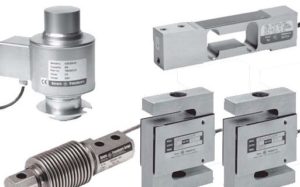Load Cell Buying GuideLoad Cell Buying Guide
Load cells are transducers capable of translating force into an electric signal. Before selecting a load cell, you must become familiar with some of their basic concepts. We can consider their voltage, resistance, parallel and series circuits or voltage drivers.

Types of Load Cells
The most common types of load cells are pneumatic load cells, hydraulic load cells, pneumatic load cells or strain gauge load cells.
Styles of the Load Cells
The S beam which derives its name from its Z or S shape which delivers an output under its tension pull. The S beams are mostly applied in truck scales, tank level, and hoppers. The S-beam are among the different types of load cells available in the market. they are best applied when suspending or hanging a weighing system.
The Bending Beam – Mostly applied in industrial control and tank weighing processes. The bending beam come with a low profile construction primarily for integration. They contain a double or single end beam. The shear beam loads are made in 500-pound capacities and are insides are shear-machined to protect their inner cell from side-load forces.
Compression – Most compression load cells possess an integral button design. In areas where space is restricted, compression load cells can be perfectly mounted.
Canister – The canister cells are mostly used for the multi-weighing and single applications. These were the pioneer strain gauge load cells. Most of these types of strain gauge load cells. Today this type of cells are primarily used for weighing systems that exceed 200 pounds on each cell.
Hydrostatic – The Hydraulic load cells can be availed for truck scales.
What Are the Load Cell Construction Materials?
There are mainly three materials from which load cells are constructed from. They are stainless steel, tool steel, and aluminum. Tool steel is by far the most popular element used in load cells as their cost against performance ratio is way better than the other materials applied in the construction of its load cell. The main alloy utilized is the 4330. Aluminum 2023 is preferred for the low capacity single point applications. Aluminum is way less expensive than all three of this material utilized when manufacturing load cells. The 17-4 ph. Stainless steel alloy delivers the best performance of any stainless steel derivative. Stainless steel loads are way more costly but are more resistant to corrosion making them an ideal pick on corrosive and wet applications.
Are They A Worthy Investment?
Stainless steel load cells that are hermetically sealed and have been made at a 17-4pH that offers top, stainless alloy performance qualities. The stainless steel is highly resistant to chemical corrosion and moisture than aluminum and steel. Hermetically sealed load cells (stainless steel) cost more than other market load cells due to the extra costs involved in sealing off its load cell. Non-hermetic cells are preferred for washdown applications where the cells are severally replaced due to frequent failure arising from moisture. They also cost more than hermetically sealed off load cells.…
